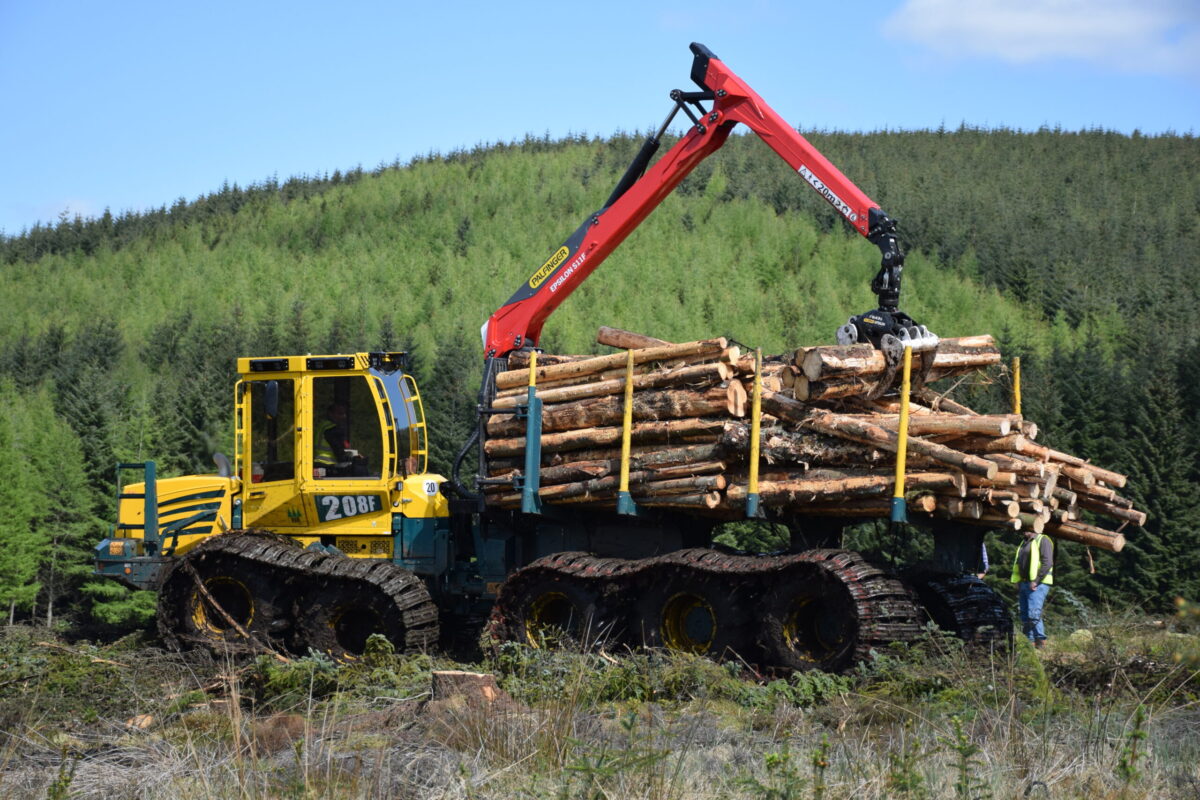I remember attending the Forwarder 2020 press event in Banchory, Aberdeenshire. It was an interesting concept and a great solution for very wet harvesting areas but unfortunately there appears to be no information available on the conclusions of the trials.
The Forwarder 2020 project was a joint venture involving 14 partners from six countries. It had funding for €2million from the European Union’s Horizon 2020 research and innovation program to finance a three-year project on a global €3million budget.
HSM 208F Forwarder
There were two prototype forwarders being tested in four separate locations, in Germany by ForstdienstleistungenHegenbarth, in Scotland by CSP Forestry LTD, in Lithuania by Aleksandro Stulginskio Universitetas and a local enterprise, and in Romania by Sc. Treforex S.r.l.
Forwarder 2020 was based on a ten-wheel Hohenloher Spezial-Maschinenbau (HSM) 208F forwarder, and very different to any ten wheeled forwarder I had seen before: all three wheels on the rear bogie are driven, this bogie is made by HSM, and the front bogie and differentials are both manufactured by NAFF. The forwarder was equipped with Clark TXL Flotation Tracks with 1175mm wide tracks on the front and 1350mm wide tracks on the rear and a Palfinger S11F crane that provided a 10.4m reach and a .43 grapple.
There was a large compartment in front of the headboard which was an accumulator for the “double recuperation of the potential energy” for the crane, which effectively reduces fuel consumption by up to 30% when loading/unloading. The other benefits of using this system are reduced engine RPM, reduction in noise levels and the capability to increase loading /unloading speed.
The upland clear fell Sitka Spruce compartment was an extremely wet peaty site with a lot of check and extremely wet rides that had to be crossed to access the harvested timber. The HSM was amazing on the saturated ground; it could travel fully loaded where a normal forwarder would have found it near impossible to travel empty. For the landowner this forwarder could have a positive impact on the amount of harvested timber per ha. Normally in such soft wet conditions the last two or three pieces of chip would be sacrificed into the brash mat to help keep the forwarder above the ground. All the timber was harvested down to the minimum top diameter, which because of the high pulpwood/chipwood prices and good demand increases the value of every tree harvested.
There was hydraulic bogie lift on the front bogies which is beneficial if the front bogie breaks the surface of the ground. By lifting the front wheels to the maximum lift, they are in effect going uphill; this makes it easier for the forwarder to recover itself.
-
That’s a remarkable amount of work hours for a single machine, the Norcar 600 owned by Erkki Rinne is taken well care of, it even has the original Diesel engine.
-
Kieran Anders is a forestry contractor working in the lake district. His work involves hand cutting and extracting timber using a skidder and tractor-trailer forwarder.
-
It is not possible to eliminate chain shot, but there are simple steps that can be taken to reduce the risk.
-
Arwel takes great pride in the fact that the mill has no waste whatsoever, “the peelings are used for children’s playgrounds, gardens and for farm animals in barns in the winter and the sawdust has multiple uses in gardens and farms as well.
-
Timber hauliers need to encourage young blood in, and also look after the hauliers we have, we need make the sector a safe and positive place to work.
FIND US ON
Related Posts
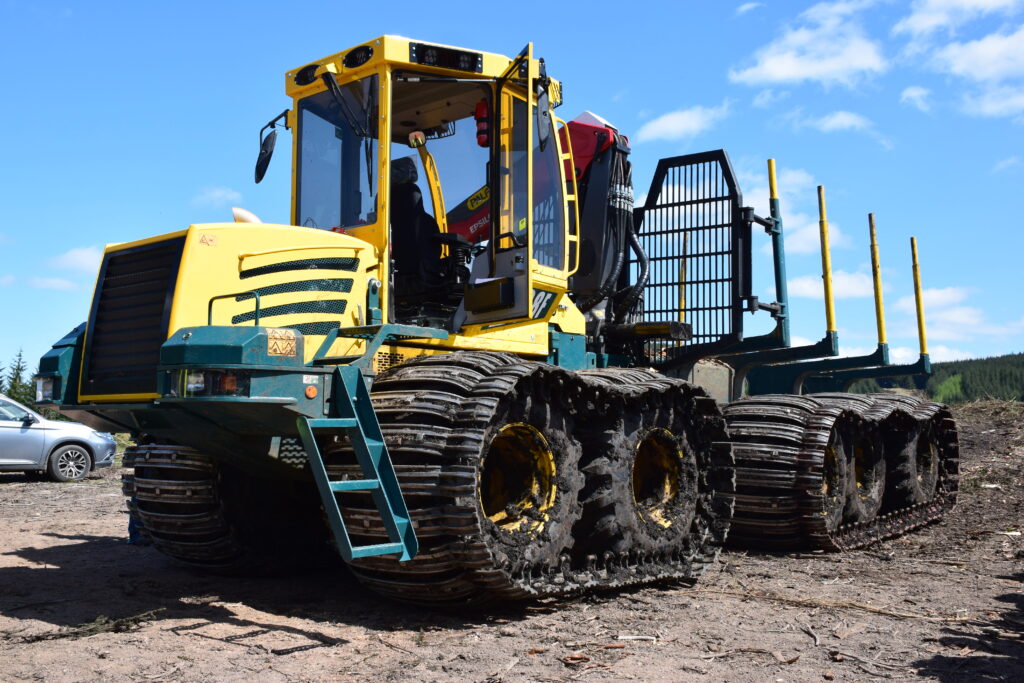

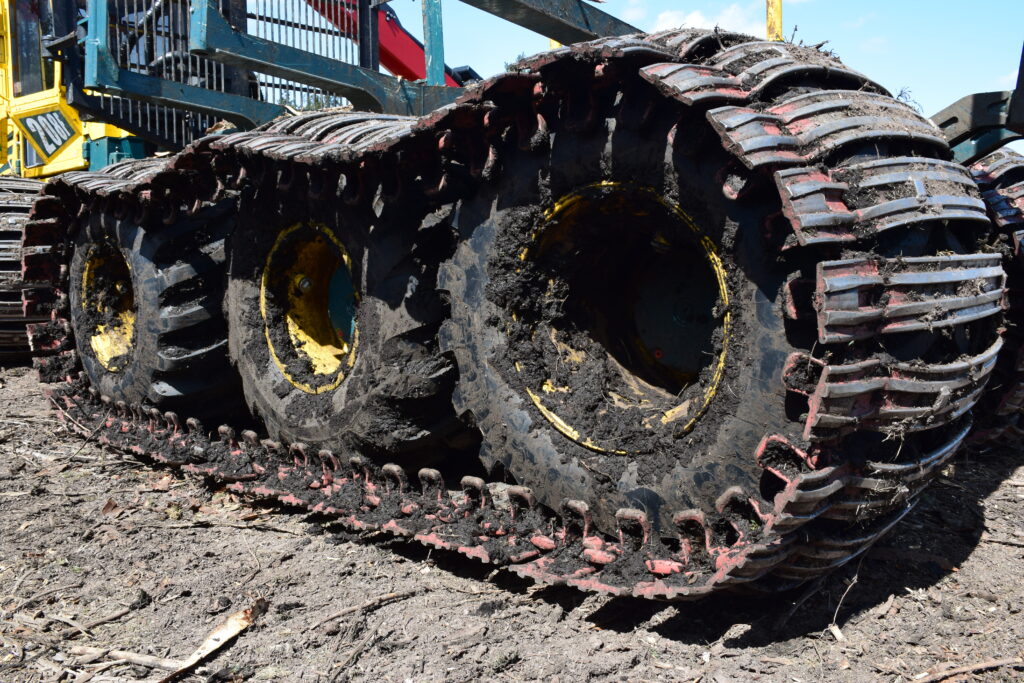

I was extremely impressed with how the forwarder travelled while used by Michael Tye, a forwarder operator working for CSP Forestry. The forwarders I have operated in the past wouldn’t have been able to travel on these conditions without a good solid brash mat, and even then I would have probably moved as much brash in a day as produce and recovery would still have been necessary from time to time.
Michael normally operates a John Deere 1910 and was impressed with how well the 208F travelled in the wet conditions. These HSMs were prototypes and a work in progress. Different tyre types were being tested for durability, wear and resistance to punctures in the different locations. On the back
bogie the two outside tyres were 940mm wide and the middle one was 650mm wide and they were using 12 ply tyres.
Felix Prinz zu Hohenlohe-Waldbenburg, CEO of HSM and Forwarder2020 co-ordinator, remarked “In Banchory, we had Proto2 with triple bogie and hybrid crane drive (HCD). Later, we will test and
present Proto1 with the hydrodynamic suspension and the hydro-mechanical powersplit transmission. Both prototypes will have the monitor system to test itself and support the test documentation of the above mentioned options.”
The HSM demonstrated the full potential of the forwarder in extremely soft and wet conditions and the presentation gave details of the innovative modules, the development process, details about the field tests and the benefits of this forwarder.


The Forwarder 2020 project were to develop five innovative components for forwarders:
Hybrid hydraulic system for the crane
This innovation of cranes, including forwarder cranes, should reduce the fuel consumption during loading and unloading processes by 30% over a conventional load-sensing system whilst also increasing the speed for loading and unloading if the operator can control the higher speed.
The high number of movements in narrow thinning in particular will show the biggest improvement. This helps selective thinning become more competitive than clear-cutting and supports sustainable wood production from forest managed on a multifunctional basis as a source of recreation and as a permanent production forest. Of course, energy saving improves the process of loading and unloading and makes it both more economical and more environmental friendly.
Bogie axle with three driven wheels
This module will double the surface under the bogie-tracks and is an innovation within the forwarder market. It enables a cost-effective, productive and environmental friendly timber harvest on wetlands where standard forwarders are particularly difficult to use or would be unproductive due to the extremely deep ruts in the skidding lane.
The triple bogie(with two extra wheels 940mm and the extra pieces of track to fit the longer bogie) costs €55K extra and it can be reversed to a standard bogie in one day in the workshop.
Hydropneumatic Suspension
This module works in the same direction as the power-split transmission. It enables long hauling distances and reduces the need for additional forest roads. The reduction of the dynamic wheel load reduces ruts and therefore improves the process of forwarding. Due to the reduced dynamic load on the structure, the chassis of the forwarder can be more lightweight and either further reduce the dynamic wheel loads or increase the payload and thus reduce the number of passages.
Human resources are also saved by the suspension, especially the back of the operator. Occupational diseases make this an important factor and stricter limits for maximum vibration exposure for operators are expected.
Hydrostatic Mechanical Transmission
This innovation has already proven to be ergonomic and to have very fuel efficient operating
characteristics in agricultural tractors. The setup of the transmission controller and the vehicle
controller needs to be markedly different due to the request to drive safe and fast downhill with a load. Still, an improvement similar to the agricultural tractors can be expected, i.e. 30% lower fuel
consumption during driving. The impact of this module on the working process is that longer hauling distances can be economically forwarded and the need for more forest roads is reduced. Moreover, as the forwarder can drive longer distances, there is less need to interrupt the process for refuelling. This
supports sustainable wood production without burdening the forest with more forest roads.
Monitoring system
This system will develop the necessary hardware and software to collect data during the work
process of the forwarder. The data provides evidence of the working area of the forwarder and shows the impact of the new developed technique relating to efficiency and environment.
On the part of forest machine owner, the collected and displayed data will prove the productivity of the machine under different working conditions. The operator will get extensive, easily understandable
information regarding their working area, clarifying where the operator is allowed to work and where not under wet conditions or at certain times of the year (breeding season etc.). Forestry owners will be able to see that the contractor has fulfilled the given requirements. Conservation organisations will be able to monitor harvesting processes to make sure that the environmental impact is as low as possible. During the project, this data will be used to prove how efficient and environmentally friendly the new machine is.
All the speakers at the presentation were knowledgeable and extremely passionate about this project and what came across was that this project is all about reducing the impact on the environment and
working towards more sustainable forestry operations.
This project is not about individuals; rather, it is about teamwork and it can be beneficial.
The forwarder was chosen because out of all the machines working in timber harvesting it has the largest wheel load, has the least impact on soil compaction and it travels the longest distances.
Forest Machine Magazine is written and edited by a forest professional with over 40 years hands on experience. We are dedicated to keeping you informed with all the latest news, views and reviews from our industry.
To support us you can subscribe to our bi-monthly magazine which is delivered to your door from only £30 per year.
Subscribe here
#homeoflogging #writtenbyloggersforloggers #loggingallovertheworld
-

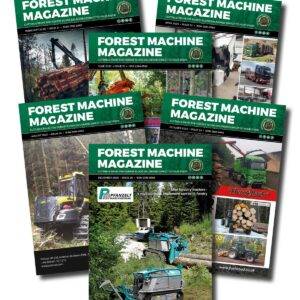 1 Year Subscription£0.00
1 Year Subscription£0.00 -

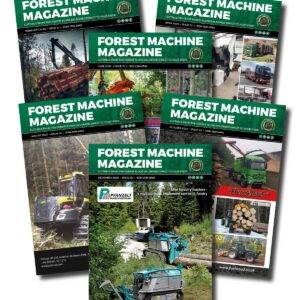 2 Year Subscription£0.00
2 Year Subscription£0.00 -

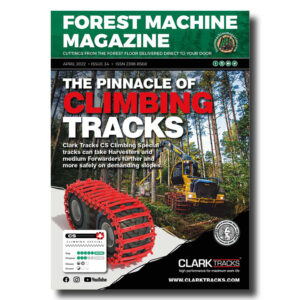 Issue 34£6.00
Issue 34£6.00 -

 Sustainable Logging: Powering The Planet T-Shirt£17.50 – £20.00
Sustainable Logging: Powering The Planet T-Shirt£17.50 – £20.00 -

 Sustainable Logging: Powering The Planet Hoodie£33.00 – £36.00
Sustainable Logging: Powering The Planet Hoodie£33.00 – £36.00

